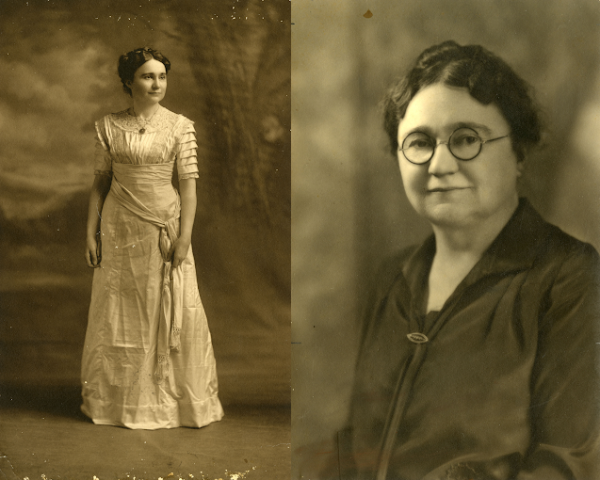Art faculty close out HERstory month
Since spring break, the Boren Lounge of Founders Hall has been decorated with Visiting Lecturer for Art Katy Collier’s work.
“This room was not beautiful, and it is really beautiful now,” said Nancy Daukas, professor of philosophy.
Collier’s art has served as a supplement to many of the HERstory month celebrations held at Guilford College throughout March and early April.
“This changes people’s minds and affects their experiences qualitatively, which makes a difference forever,” said Daukas. “It really does.”
The installation was completed with collaboration among Collier, Visiting Assistant Professor of Theatre Studies Robin Vest and Hege Library Art Gallery Director and Curator Terry Hammond, with hopes of inspiring those who visited the lounge.
“One of the reasons that it is so, so important that the arts be really genuinely inclusive is that they have this power to help us see things in new ways and they have this power to help us imagine how things could be different,” said Daukas.
“And so it’s so important that we get that experience from different people’s points of view.”
Guilford’s HERstory month celebrations came to a close with a program by women in the arts at the College on Friday, April 6. Ranging from music to set design, Guilford’s women art faculty discussed their work and creative processes.
Collier, who was inspired after attending a presentation in which Associate Professor of Political Science Maria Rosales discussed infrapolitics, began her presentation with a comparison between infrared light and the labor behind art.
“Part of the definition of infrared light is that infrared light is part of the spectrum that people encounter most in everyday life, although much of it goes unnoticed,” said Collier. “It is invisible to the human eye, but people can feel it as heat.
“It made me think about labor, and how women’s labor specifically is to everyday lives. It is so integral in everything that we do and people just assume that women will be like the people that take care of all of these things that go under the radar.”
Collier then discussed the processes behind creating monotypes and woodcuts, which are the primary mediums she currently works with. Collier’s talk was accompanied by photos of the various prints she’d created, some of which were displayed in the room for attendees to see.
In addition to presentations focused on art mediums, faculty also focused on the history of art and women in art. Associate Professor of Art Kathryn Shields gave a talk titled, “The Personal as Political: A Feminist History of Art and its Audience.”
Shields spoke about the process of writing about art for an audience based on the experience of writing the art appreciation textbook, “Gateways to Art: Understanding the Visual Arts.”
“One of the reasons why I wanted to talk about audience is I think audience is crucial to any performer to any presenter to any teacher to any speaker, to any person in any kind of situation,” said Shields. “One of the things that I struggled with, especially during the first edition, writing the first edition of this book, was audience.”
Shields elaborated on her experience of writing and editing the first edition of the textbook.
“And it was really hard for me to make a shift from a very discipline-specific way of thinking to using shortcuts to get to concepts because people understood what I was talking about,” said Shields.
Faculty presenters included information about how students could become more involved in the arts at Guilford.
Experience Design Librarian Meg Hinson’s presentation titled, “Wanna Get Knotty? Make It Sew!” focused on the textiles work she and her students explore. Hinson also addressed the makerspaces that will be in Hege Library in the future.
These new makerspaces include a textile studio, recording studio, IDEAtion lab and VR/AR studio to encourage student involvement with art outside of regular classrooms.
“You don’t have to limit yourself to a box, to a little room,” said Hinson. “You can look outside of it.”








